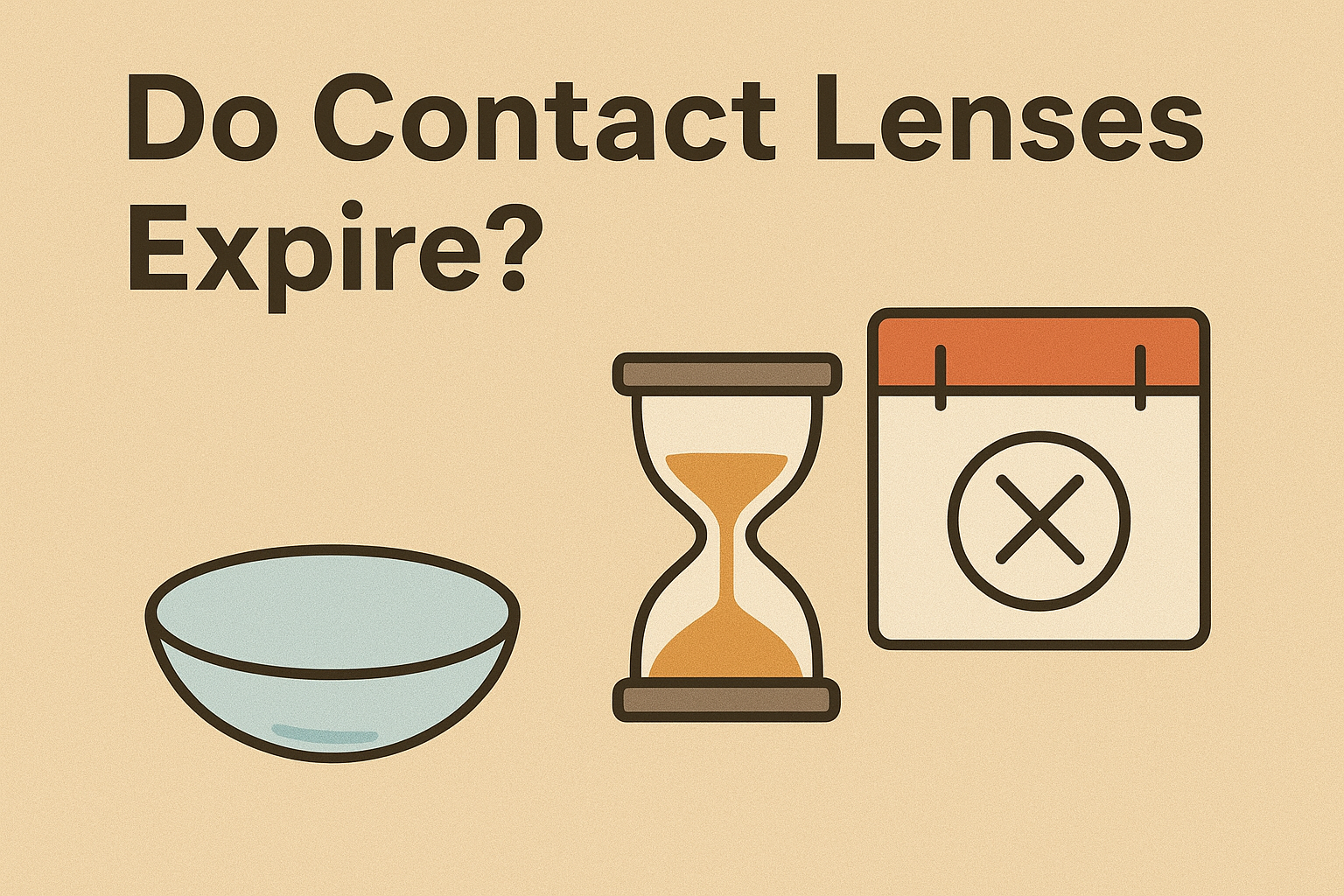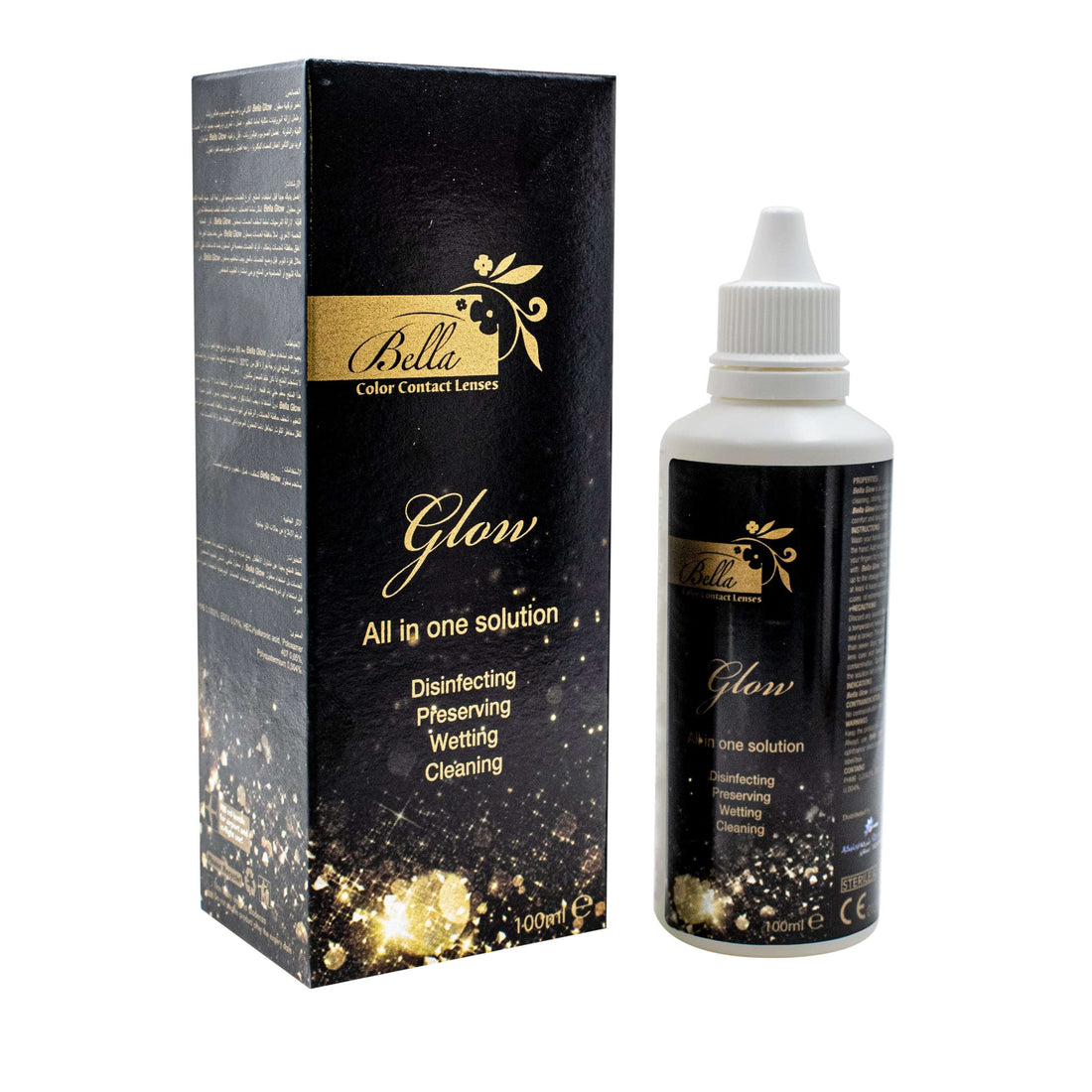Key Takeaway
Contact lenses do expire, and using expired lenses can lead to serious eye infections, reduced vision quality, and long-term eye damage. Understanding expiration dates, proper storage, and replacement schedules is crucial for maintaining healthy vision.
For reliable, fresh contact lenses delivered on schedule, consider exploring quality options at BellaLense to ensure you never have to worry about expired contacts again.
Introduction
If you're a contact lens wearer, you've probably wondered at some point: "Do contact lenses expire?" The short answer is yes – contact lenses absolutely do expire, and this isn't just a suggestion from manufacturers. Understanding contact lens expiration dates is crucial for your eye health and safety.
Whether you wear daily disposables, weekly, monthly, or yearly contacts, every pair comes with an expiration date that shouldn't be ignored. In this comprehensive guide, we'll explore everything you need to know about contact lens expiration, from understanding the dates on packaging to the risks of wearing expired lenses.
Understanding Contact Lens Expiration Dates
What Do Expiration Dates Mean?
Contact lens expiration dates indicate the last day the manufacturer guarantees the lens will be sterile and safe for use when stored properly. These dates aren't arbitrary – they're based on extensive testing to determine how long the packaging solution can maintain sterility and how long the lens material remains stable.
The expiration date appears on both the outer packaging and individual lens packages, typically formatted as MM/YYYY or DD/MM/YYYY. This date represents when the unopened, properly stored contact lens package is no longer guaranteed to be sterile.
Why Contact Lenses Have Expiration Dates
Contact lenses expire for several important reasons:
Sterility Concerns: The saline solution that keeps lenses sterile in their packaging gradually loses effectiveness over time. Bacteria, fungi, and other microorganisms can potentially breach the packaging or multiply if sterility is compromised.
Material Degradation: Contact lens materials can break down over time, even when properly stored. This degradation can affect the lens's oxygen permeability, comfort, and optical clarity.
Packaging Integrity: The sealed packaging that protects your lenses can deteriorate over time, potentially allowing contaminants to enter.
Regulatory Requirements: Health authorities like the FDA require expiration dates to ensure consumer safety and product reliability.
Types of Contact Lenses and Their Expiration Timelines
Daily Disposable Contact Lenses
Daily disposable lenses typically have expiration dates ranging from 1-4 years from the manufacturing date. These single-use lenses are designed to be worn once and thrown away, making them the most hygienic option available.
Key characteristics:
-
Longest shelf life when unopened
-
No cleaning or storage required
-
Highest level of convenience and hygiene
-
Most expensive per lens but often cost-effective overall
Weekly and Bi-Weekly Contact Lenses
Weekly and bi-weekly lenses usually expire 2-4 years from manufacturing. These lenses require daily cleaning and proper storage when not being worn.
Important considerations:
-
Must be replaced according to schedule, regardless of packaging expiration
-
Require proper cleaning and disinfection
-
More economical than dailies for regular wearers
Monthly Contact Lenses
Monthly contact lenses typically have similar expiration dates to weekly lenses, ranging from 2-4 years. However, once opened, they must be discarded after one month regardless of how often they were worn.
Key points:
-
Cost-effective for daily wearers
-
Require meticulous cleaning and care
-
Must track replacement schedule carefully
Extended Wear and Specialty Lenses
Extended wear lenses and specialty lenses (such as those for astigmatism or presbyopia) may have varying expiration dates depending on their materials and design. Some specialty lenses may have shorter shelf lives due to their specific compositions.
Risks of Using Expired Contact Lenses
Eye Infections and Complications
Using expired contact lenses significantly increases your risk of serious eye infections, including:
Bacterial Keratitis: A severe infection of the cornea that can cause permanent vision loss if left untreated. Expired lenses may harbor bacteria that can penetrate the eye's surface.
Fungal Infections: These are particularly dangerous and difficult to treat. Expired packaging solutions may not effectively prevent fungal growth.
Acanthamoeba Keratitis: A rare but serious parasitic infection that can lead to severe scarring and vision loss.
Conjunctivitis: While less serious than other infections, pink eye caused by expired contacts can still be uncomfortable and contagious.
Reduced Vision Quality
Expired contact lenses may provide poor vision correction due to:
-
Material degradation affecting lens shape
-
Decreased optical clarity
-
Increased protein and lipid deposits
-
Changes in lens flexibility and comfort
Physical Discomfort and Damage
Wearing expired contacts can cause:
-
Increased dryness and irritation
-
Reduced oxygen transmission to the eye
-
Higher risk of lens tearing or breaking
-
Allergic reactions to degraded materials
How to Read Contact Lens Expiration Dates
Understanding Date Formats
Contact lens expiration dates can appear in different formats:
-
MM/YYYY: Month and year (most common)
-
DD/MM/YYYY: Day, month, and year
-
YYYY/MM/DD: Year, month, and day (less common)
Always check the packaging carefully, as different manufacturers may use different formats. When in doubt, contact the manufacturer or your eye care provider for clarification.
Where to Find Expiration Dates
Look for expiration dates in these locations:
-
Outer packaging/box: Usually prominently displayed
-
Individual blister packs: Small print on the foil or plastic
-
Lens vials: For some specialty lenses
-
Manufacturer inserts: Additional information sheets
Proper Storage to Maximize Contact Lens Lifespan
Optimal Storage Conditions
To ensure your contact lenses remain safe until their expiration date:
Temperature Control: Store lenses at room temperature (68-77°F or 20-25°C). Avoid extreme temperatures, including:
-
Direct sunlight
-
Hot cars
-
Freezing conditions
-
Heat sources like radiators
Humidity Considerations: Keep lenses in a dry environment to prevent packaging damage from moisture.
Location Matters: Store in a clean, dust-free area away from potential contaminants.
What to Avoid
Never store contact lenses:
-
In bathrooms with high humidity
-
In direct sunlight or hot areas
-
In cars (temperature fluctuations)
-
Near chemicals or cleaning products
-
In areas where packaging could be damaged
Signs Your Contact Lenses May Be Compromised
Visual Inspection
Before inserting any contact lens, examine it for:
-
Tears or nicks in the lens material
-
Discoloration or cloudy appearance
-
Unusual deposits on the lens surface
-
Changed texture or flexibility
-
Damaged packaging (leaks, punctures, or swelling)
Physical Sensations
If you experience any of the following after inserting lenses, remove them immediately:
-
Immediate discomfort or pain
-
Burning or stinging sensations
-
Excessive tearing
-
Blurred vision that doesn't clear with blinking
-
Feeling that something is stuck in your eye
Best Practices for Contact Lens Management
Inventory Management
Keep track of your contact lens supply:
-
First In, First Out: Use older lenses before newer ones
-
Regular Inventory Checks: Monthly reviews of expiration dates
-
Proper Labeling: Keep lenses in original packaging until use
-
Subscription Services: Consider subscription services to ensure fresh, regularly delivered lenses
Creating a Replacement Schedule
Develop a system to track:
-
When you opened new lenses
-
Scheduled replacement dates
-
Remaining supply
-
Upcoming orders needed
Emergency Preparedness
Always maintain:
-
Backup glasses with current prescription
-
Extra contact lens solution
-
Fresh contact lenses for emergencies
-
Contact information for your eye care provider
When to Consult Your Eye Care Professional
Regular Check-ups
Schedule routine eye exams:
-
Annual comprehensive exams for most adults
-
More frequent visits if you have eye conditions
-
Immediate appointments for any concerning symptoms
Warning Signs Requiring Immediate Attention
Contact your eye care provider immediately if you experience:
-
Severe eye pain
-
Sudden vision changes
-
Persistent redness or swelling
-
Discharge from the eyes
-
Light sensitivity
-
Foreign body sensation that doesn't resolve
Professional Guidance
Your eye care professional can help with:
-
Proper contact lens selection
-
Fitting and comfort issues
-
Care and maintenance instruction
-
Problem-solving for any issues
Frequently Asked Questions (FAQ)
Can I use contact lenses after the expiration date?
No, you should never use contact lenses after their expiration date. The sterility and material integrity cannot be guaranteed beyond this date, putting your eye health at risk.
How long can I store unopened contact lenses?
Unopened contact lenses can be stored safely until their printed expiration date when kept in proper conditions. This is typically 2-4 years from the manufacturing date.
What happens if I accidentally wear expired contacts?
If you accidentally wear expired contacts, remove them immediately and monitor your eyes for any signs of irritation, redness, or infection. Contact your eye care provider if you experience any symptoms.
Do contact lens solutions expire too?
Yes, contact lens cleaning and storage solutions also have expiration dates. Using expired solutions can be just as dangerous as using expired lenses.
How can I avoid using expired contact lenses?
The best way to avoid expired lenses is to maintain good inventory management, use a first-in-first-out system, and consider subscription services that deliver fresh lenses regularly.
Are there any exceptions to contact lens expiration dates?
No, there are no safe exceptions to contact lens expiration dates. These dates are established through rigorous testing for safety reasons.
What should I do with expired contact lenses?
Dispose of expired contact lenses properly. Don't flush them down the toilet or drain, as they can harm the environment. Many eye care offices accept old lenses for recycling.
Conclusion
Contact lens expiration dates aren't suggestions – they're critical safety guidelines that protect your vision and eye health. Using expired contact lenses can lead to serious complications, including vision-threatening infections and permanent eye damage.
By understanding how to read expiration dates, properly store your lenses, and maintain good replacement schedules, you can enjoy the convenience and clarity that contact lenses provide while keeping your eyes healthy and safe.
Remember that proper contact lens care goes beyond just checking expiration dates. Regular eye exams, following your eye care provider's recommendations, and using quality products are all essential components of safe contact lens wear.
For those looking to simplify their contact lens routine and ensure they always have fresh, non-expired lenses available, exploring reliable suppliers and subscription services can provide peace of mind and consistent eye health support. Your vision is irreplaceable – treat it with the care and attention it deserves by never compromising on expired contact lenses.
Take action today: check your current contact lens supply for expiration dates, dispose of any expired lenses safely, and establish a system to prevent future expiration issues. Your eyes will thank you for the extra attention to safety and care.






